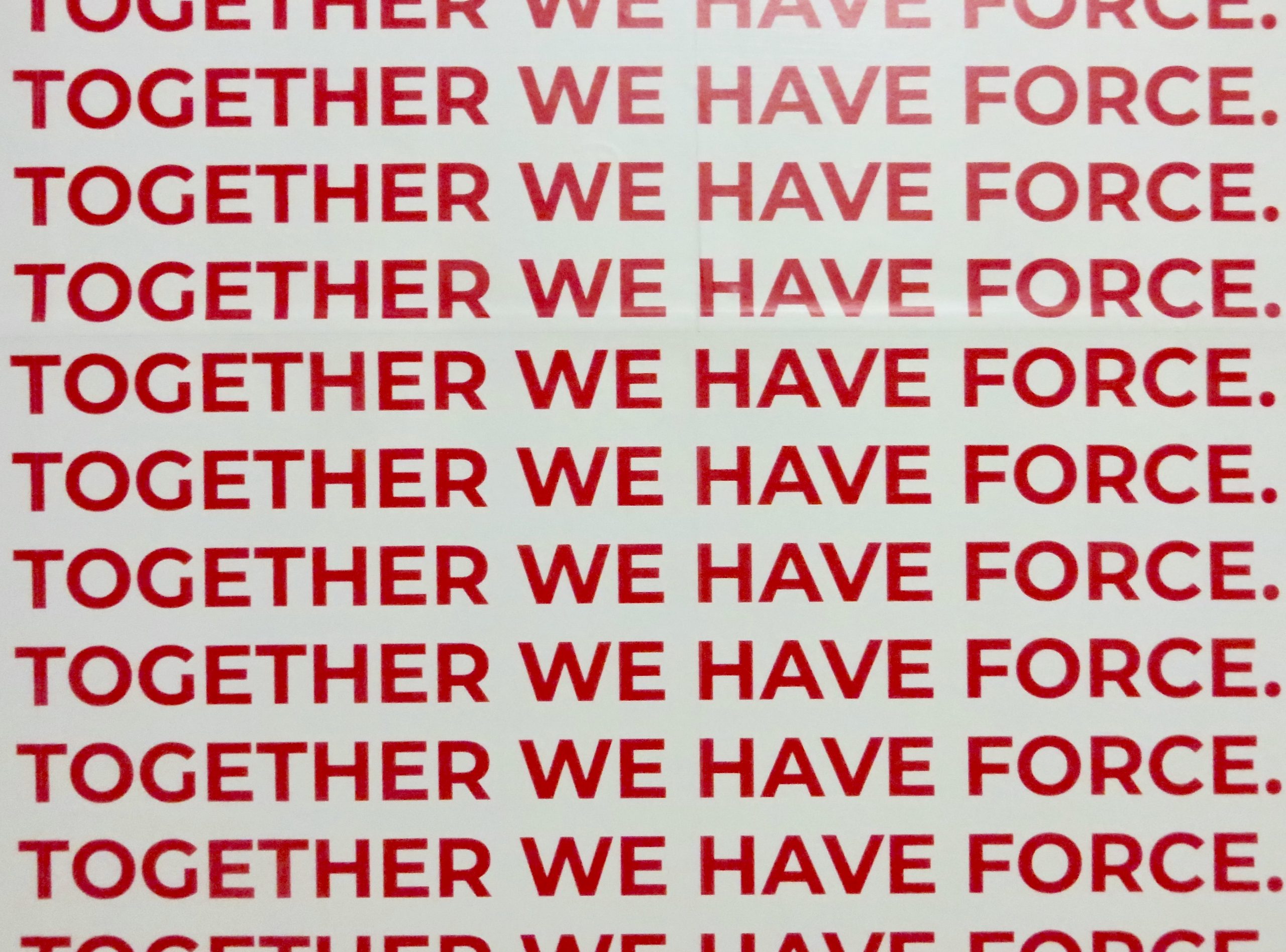Google “What are the best techniques and tools for decision making?” and you won’t get a clear answer. Too many types of decisions. Too many different approaches. It’s overwhelming. This article filters out the clutter and focuses on what actually works. Read on to explore our 6 best decision making methods for teams – and discover which comes out on top. Making informed, successful decisions together is within reach.

In this post, you’ll learn:
- What Is Team Decision Making?
- Why Is Team Decision Making Important?
- Are You Better Off Making Decisions Alone?
- Individual or Team Decision? Use the Vroom-Yetton Model.
- How Do You Make Team Decisions Faster? Avoid Bikeshedding.
- Decide by Consent: Avoid Inefficient Team Decisions.
- You Need a Team Decision. But How Do You Get There?
- Brainstorming: Gather Ideas as a Team Before Making Your Decision.
- 6 Decision Making Techniques Your Team Should Know (+ Templates)
- The Best Team Decision Making Technique? Mind Mapping!
What Is Team Decision Making?

Top-down decision making used to be the norm. This is when a manager makes a decision alone, and the team puts it into action. Simple – but not always effective. These days, many companies favor agile working. In agile organizations, responsibility is shared and decision making is collaborative. There are many decision making tools and techniques available to help you with this.
Making a decision that affects your team? Get them involved! This way, you ensure that everyone’s opinions are considered. It also makes it easier to find a solution that works for the majority.
Why Is Team Decision Making Important?

65% of the decisions we make today are more complex than they were two years ago. Decision makers have more options – and more stakeholders – to consider than ever before. Involving your team will make the process easier. When decisions are made together, everyone brings their own unique perspective. This helps you to explore the possible outcomes and risks of a decision more thoroughly.
Making decisions as a team also prevents your decisions from being based too heavily on data. Data is good, but data shows the past. If you want to make sustainable and innovative decisions, you need to get creative and focus on the future. When you explore and reach decisions together, you:
- Generate new ideas more easily.
- Motivate your team and make them feel heard.
- Help your team think critically to solve problems.
- Benefit from collective intelligence.
Are You Better Off Making Decisions Alone?

Roughly 80% of the decisions you make at work are operational. Only 20% are strategic.
Learn more about the types of business decisions managers face in this blog post.
As a rule, operational decisions are best handled alone. This is because they are usually straightforward and low risk. Since strategic decisions affect a lot of people, it’s best to make them as a team. When you involve those affected in the decision-making process, you improve the quality of your decisions. Your team is also more likely to support decisions they have had a say in.
Individual or Team Decision? Use the Vroom-Yetton Model.

Unsure whether you’re better off making a decision alone or with your team? Use the Vroom-Yetton decision making model as a guide.
Answer yes or no to the following 7 questions. This will help you determine the best decision making method for your situation:
- Is the quality of the decision important?
- Is the team’s commitment to the decision important?
- Do you have enough information to make the decision yourself?
- Is the problem clearly defined?
- Would the team be committed to implementing the decision?
- Does the team share the goals of the organization?
- Is the decision likely to cause conflict among team members?
Open The Vroom-Yetton Decision Model Template in MindMeister.
Give it a try. Click on this mind map and answer the questions with your current situation in mind.
At the end, you will get your recommended decision making style. The 5 decision making styles are:
- Autocratic (A1)
- Autocratic (A2)
- Consultative (C1)
- Consultative (C2) and
- Collaborative (G2)
While in A1 you make your decision alone, in A2, C1 and C2 you increasingly involve your team. In G2, you brainstorm together as a team and, as the team lead, make sure that everyone agrees with the decision.
How Do You Make Team Decisions Faster? Avoid Bikeshedding.

Team decisions are good. Effective team decisions are better. To make good decisions, avoid the bike shed effect. If you haven’t heard of it, you’ve certainly experienced it. This phenomenon is when teams pay too much attention to trivial issues. In contrast, complex decisions are made quickly.
You’ve probably noticed this before. For example, when a discussion about a new coffee machine takes just as long as financial planning. Why does this happen? Everyone is happy to express an opinion on something simple. However, when it comes to making a complex decision, people feel overwhelmed. They prefer to take a back seat and leave the decision to the experts.
Make decisions as fast as Bezos! When making easily reversible decisions, such as introducing a new pricing system, analyze less up front. This helps you to move quickly and stay competitive.
Decide by Consent: Avoid Inefficient Team Decisions.

Making decisions as a team can be a slow process. To make effective decisions faster, avoid:
- Wasting time on decisions that are not business-critical.
- Bikeshedding.
- Failing to commit to a decision.
How? Follow these 3 steps:
- Involve your team. When making big decisions, involve everyone who will be affected.
- Forget consensus. Say no to long discussions. It’s unlikely everyone will agree 100%.
- Choose consent. Say yes to efficient team decision-making. When no one has a serious objection, you can move forward.
Discover 10 tips for making better business decisions – and the mistakes to avoid.
You Need a Team Decision. But How Do You Get There?

Want to change the pricing structure of a product? Or launch a new sales initiative? Make a decision as a team quickly with one of the many decision making techniques out there.
The team decision making process doesn’t have to be time-consuming or exhausting. The trick is to choose the right approach for your situation and team culture.
Read on for the best techniques and tools for decision making.
Brainstorming: Collect Ideas as a Team Before Making Your Decision.

The goal of a brainstorming meeting is to gather as many ideas as possible. It’s designed to help your team explore all the options, rather than to make a decision on the spot. Often, however, one idea stands out. When that happens – great!
Brainstorming is an effective method for finding solutions as it provides a fluid structure for discussion. It also gives your team the chance to problem-solve creatively.
Online brainstorms increase creative output by nearly 50% of that of in-person meetings. Learn why mind maps are so effective.
6 Decision Making Techniques Your Team Should Know.
This section covers the following 6 decision making techniques:
- Pros and cons list
- Decision tree
- Decision matrix
- SWOT analysis
- The Delphi method
- Nominal Group Technique
Read on to learn which method is best for which decisions. You can use the mind map templates to help you put each technique into action!
1. A Pros and Cons List
A pros and cons list is the simplest of the classic decision making methods. Here, you list the pros and cons of each question in a table with two columns. You compare and evaluate your two choices in a centralized and structured way to arrive at a decision.
Use a pros and cons list early in the decision making process. For example, when you want to better understand your options or gain new insights.
A pros and cons list works for the following questions:
- Simple questions
- Low-risk questions
- Closed questions (e.g. yes/no questions)
Example questions:
- Should we move our team meeting to Monday instead of Friday? Yes/No
- Should we test an online campaign on TikTok? Yes/No
- Do we want to introduce meeting-free Wednesdays? Yes/No
Helpful Tool for Creating a Pros and Cons List: Online Survey
Choose an online survey tool like easy-feedback. Make the name of your survey the question you’re asking e.g. “Team meeting on Monday?”. Below that, split the question into “arguments for” and “arguments against”.
You can also use a mind map in MindMeister. In this case, you can collect the arguments for and against in two branches. Everyone with permission has access to the map, updates are reflected in real time, and editing is easy.
Sometimes, points are neither positive or negative. In this case, you need more information to evaluate them properly. The Plus Minus Interesting List (PMI List) expands on the pros and cons list for a more thorough analysis.
2. A Decision Tree
This decision making technique helps you visualize the possible outcomes of a course of action. Each branch represents a choice, and each node represents an outcome. This visual overview makes it easy to identify the best option – and make a good decision.
A decision tree works for the following questions:
- Yes/no questions
- Clearly formulated questions
- Questions with multiple criteria (the MCDM method or multi-criteria decision making).
Example questions:
- Which product should be promoted to our target group in the summer?
- Should I delegate this task?
Helpful Tool for Creating a Decision Tree: Canva
You can use a tool like Canva to create a decision tree. Customize the pre-made template and share it with your team. Easy!
Alternatively, choose a mind mapping tool like MindMeister. You have an unlimited workspace to explore your options – and you can create as many decision trees as you need. Invite your team to edit them collaboratively in real-time.
A decision tree helps you think in steps. Breaking down the problem into yes/no questions makes it easier to reach a practical decision.
Template: Decide Now With a Decision Tree.
Ready To Go? Open the “Should I Delegate This Task?” Template in MindMeister.
3. A Decision Matrix
Need to compare multiple solutions to a single problem? Use a decision matrix. This decision making technique takes into account the factors which are important to your decision. It removes bias and emotion from the process so you can evaluate your options objectively. It also helps you to defend your decision with clear arguments.
A decision matrix works for the following questions:
- Questions with multiple possible answers
- Questions with multiple factors influencing the decision
Example questions:
- Which of the 5 applicants should we choose?
- Which agency should we hire for our rebranding?
Helpful Tool for Creating a Decision Matrix: A Mind Map
Choose a mind mapping tool like MindMeister to create your decision matrix. When you use this method again, you can keep your decision matrices together in one easily accessible place.
Alternatively, you can use the free Weighted Decision Matrix tool. You can share the outcome with your team as a screenshot.
Make decision making easy for your team. Use an mind map and follow these steps:
- Phrase your question clearly.
- Include the variables and options as sub-elements.
- Score the options together with scores from 1 to 5 for each variable.
- Weight the criteria according to their relevance to the decision (5 is “important” and 1 is “unimportant”).
- Determine the winner using the totals. Multiply the weights of all categories by all scores and add up all points.
Template: Decide Now With a Decision Matrix.
Open the Decision Matrix template in MindMeister.
4. SWOT Analysis
A SWOT analysis helps you to understand your business’s strengths, weaknesses, opportunities, and threats. The purpose of a SWOT analysis is to determine your business goals and strategy. You do this by exploring your position in relation to your competitors and market conditions. The insights you gain will help you to make more informed strategic decisions.
A SWOT analysis works for the following questions:
- Strategic questions
- Questions about goals and priorities
Example questions:
- What are our strengths and weaknesses as a team?
- What opportunities and threats does our company face?
Helpful Tool for a SWOT Analysis: A Mind Map
Choose a mind map tool like MindMeister. This allows you to gather your strengths, weaknesses, opportunities and threats centrally. Information remains easily accessible to your team, which means there’s no need for messy email threads.
Alternatively, you can fill in a Google Sheet as a team. You can also download free online templates for Word, Excel or PowerPoint from Smartsheet.
Template: Decide Now With a SWOT Analysis.
5. The Delphi Method
The Delphi method helps you to reach a decision on a complex issue that requires a high level of team acceptance. With this method, you combine the knowledge of several experts to create a forecast. Knowledge is gathered via surveys or interviews and the goal is to reach a consensus. The process happens in stages. You condense your options as you go until the best solution is clear.
Use this method if you don’t have enough empirical data but still want a professional forecast.
The Delphi method works for the following questions:
- Questions about forecasts
- Questions about future trends
Example questions:
- What resources do we estimate we will have for each project over the next 2 years?
- What trends do we need to consider when developing our new product?
Helpful Tool for Implementing the Delphi Method: Online Questionnaire
Create a smart online survey using SurveyMonkey. You can send identical online questionnaires to all experts for the survey rounds. With an online survey, you ensure that the experts don’t come into contact with each other. This way, there’s no possibility of them influencing each other. Mutual influence often occurs in direct discussions and this can lead to less objective decision making.
If you’re using the Delphi method in real time, i.e. if a direct or simultaneous exchange is taking place, you can also use a mind map.
6. Nominal Group Technique
In the Nominal Group Technique (NGT), your team members independently generate multiple ideas. Your team then discusses and prioritizes them together. The process includes a total of 4 steps:
- Individual idea generation
- A round-robin to present ideas in a group
- Discussion
- Ranking the ideas
As the name indicates, the “group” exists in name only. Throughout the process, participants do not interact freely with each other. With this decision making technique, you capture your team’s true opinions in a structured way. It’s also a great way to encourage individual creative problem solving.
Conduct the survey anonymously if the topic is sensitive or controversial.
The Nominal Group Technique works for the following questions:
- Questions about specific problems
- Questions about goals and priorities
Example questions:
- What are the reasons for the lack of cooperation in the department?
- How can we achieve our quarterly goals as a team, even though we’re falling behind?
Helpful Tool To Implement the NGT Technique: Online Whiteboard
During a moderated online meeting, use an online whiteboard to gather ideas. All team members can note down their suggestions and prioritize them in the group. The rankings given by the participants are then added up, resulting in an overall ranking for all suggestions.
Want a different method? Use the “How Might We” mind map template to gather feedback for improvement.
The Best Team Decision Making Technique? Mind Mapping!
Need a flexible decision making technique to reach team decisions easily? Use a mind map to brainstorm together.
Of course, there are other tools for decision making which can help you with specific problems. Sometimes you need to handle decisions anonymously, which requires an online survey. If you want to automatically calculate ranking totals, a table with ready-made formulas is the obvious choice.
However, there are many ways you can use mind maps as a team decision making tool. With a mind map, your team can explore options collaboratively and transparently. You can use colors, shapes, and images to structure and display your content. This means everyone can intuitively navigate the map to generate ideas quickly and solve complex problems.
Mind mapping helps you:
- When you’re brainstorming solutions as a team.
- In the implementation of different decision making techniques.
- To collaborate easily – especially if you have remote employees.
- In each stage of the decision making process – from deciding whether a team. decision is needed, to involving your team and documenting the decision.
Ready to develop your mind mapping skills for better brainstorms? Take a look at our free MindMeister courses.
FAQs
What Is the Best Technique for Team Decision Making?
Brainstorming in a collaborative mind map is one of the easiest decision making techniques for teams. Your team can generate creative ideas quickly and solve complex problems in a structured environment. Everyone has the opportunity to contribute suggestions before a final decision is made. Mind maps provide a visual overview of the information you have gathered, which makes it easier to evaluate your options.
What Are the Best Decision Making Tools for Teams?
These 6 decision making tools can help you make better decisions as a team:
- A pros and cons list
- The Delphi method
- Nominal Group Technique
- A decision tree
- A decision matrix
- A SWOT analysis
How Do I Make Decisions as a Manager?
Approximately 80% of all decisions you make at work are operational. The remaining 20% are strategic. While “everyday” decisions don’t usually need input from others, strategic decisions are best made as a team. This is because the impact of these decisions is greater, and they typically affect more people. Use the Vroom-Yetton decision model to help you choose the right decision-making method.


